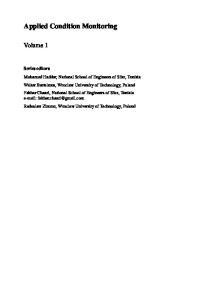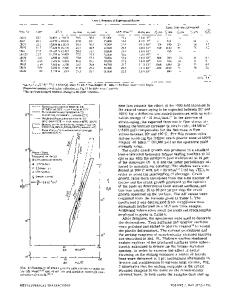Elevated-temperature fatigue crack growth
- PDF / 1,652,935 Bytes
- 10 Pages / 594 x 774 pts Page_size
- 61 Downloads / 495 Views
I.
INTRODUCTION
T H E R E has been considerable effort in the last two decades in developing and improving Ni-base, single crystal alloys for advanced turbine engine applications. By eliminating grain boundaries and melting point depressants, researchers have demonstrated that single crystal Ni-base alloys are attractive materials for turbine engine applications because of improved creep resistance, thermal fatigue resistance, and high incipient melting point. ~These improvements lead to significant increases in the allowable metal temperature and blade stress for the single crystal components, and, therefore, more efficient turbine engines. The mechanical properties of Ni-base single crystal alloys are highly anisotropic. Extensive efforts have been directed toward characterizing the tensile strength, creep resistance, and, among others, fatigue behavior of Ni-base single crystal alloys. High- and low-cycle fatigue studies of both columnar-grained and single crystal superalloys as a function of temperature, 2'3 frequency, 4 and microstructure 5 indicated that extended crystallographic cracking, i.e., Stage I fatigue, 6 can be expected at all cyclic frequencies for temperatures up to ~760 ~ and at even higher temperatures for engine excitation frequencies. 4 The extended crystallographic cracking along slip bands observed in Ni-base single crystals has also been observed in other precipitation-hardened alloys, including A1-7,s and Ti-alloys. 9'1~In all cases, the fracture surfaces are characterized by a cleavage-like fracture appearance, suggesting that normal stress is important in the fracture process. This fracture behavior has been explained by Koss and Chan "'~2 on the basis of the inability of coplanar slip to relax the normal
*MAR-M is a trademark of Martin Marietta Company. K. S. CHAN, Senior Research Engineer, and G. R. LEVERANT, Director, Department of Materials Sciences, are with Southwest Research Institute, 6220 Culebra Road, P.O. Drawer 28510, San Antonio, TX 78284. Manuscript submitted April 3, 1986. METALLURGICALTRANSACTIONS A
stress components ahead of the crack, resulting in an elasticplastic stress state which is not conducive to out-of-plane noncoplanar secondary slip. The difficulty in activating outof-plane secondary slip leads to a large normal stress buildup on the coplanar slip bands, causing cracking along crystallographic slip planes. In contrast to Stage I cracking in polycrystalline materials, extended crystallographic crack growth along slip bands in single crystal alloys generally does not exhibit a transition from Stage I to Stage II, 6 although exceptions have been reported. 8 In an effort to develop a fundamental understanding of the mechanism by which extended crystallographic crack growth occurs, fatigue crack growth in a Ni-base single crystal alloy, MAR-M200, has been studied as a function of crystallographic orientation and the applied stress state ~3'~4at ambient temperature. The results of these crack growth studies indicate that crystallographic cracking along a single
Data Loading...











